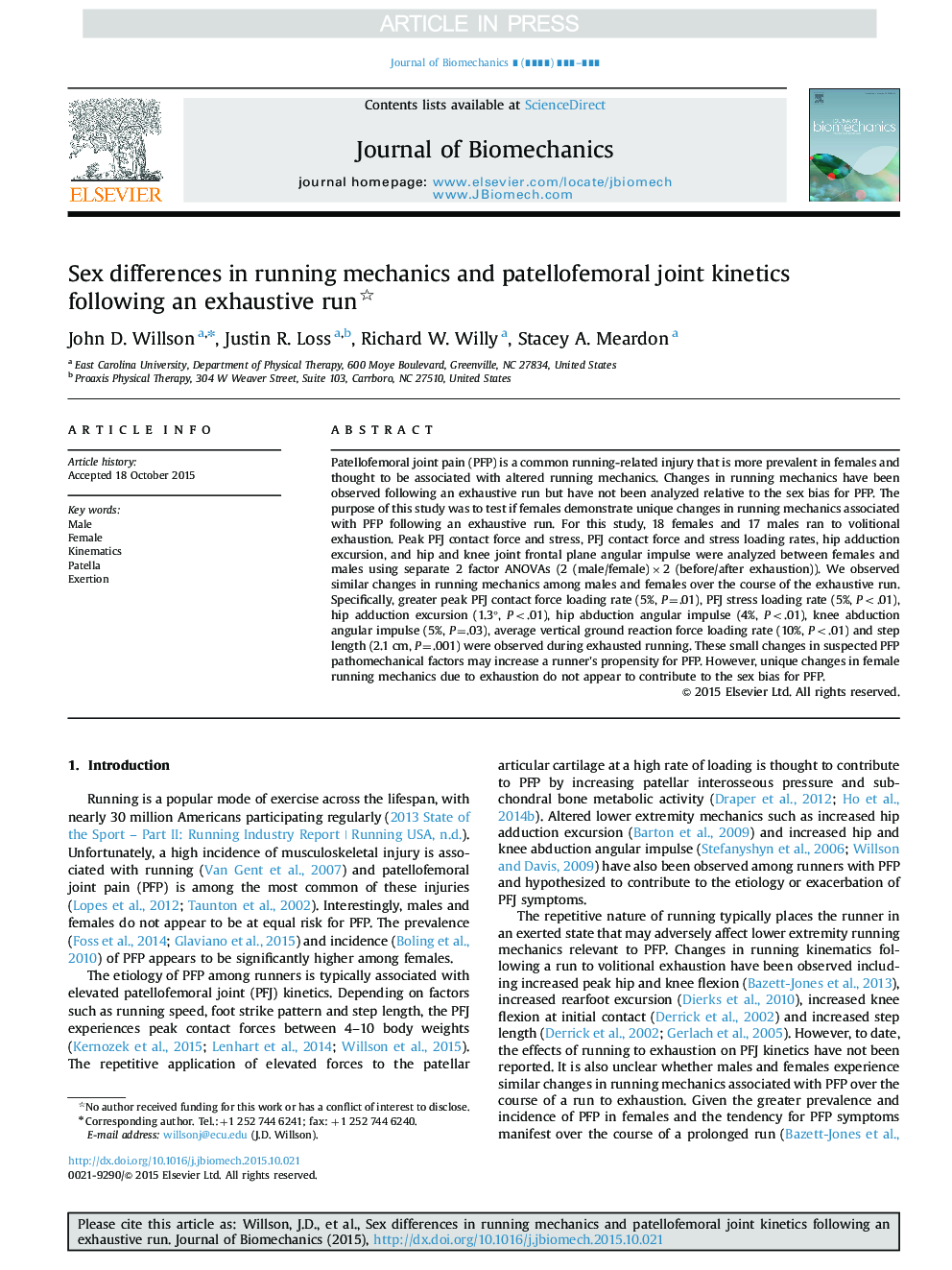| Article ID | Journal | Published Year | Pages | File Type |
|---|---|---|---|---|
| 10431253 | Journal of Biomechanics | 2015 | 5 Pages |
Abstract
Patellofemoral joint pain (PFP) is a common running-related injury that is more prevalent in females and thought to be associated with altered running mechanics. Changes in running mechanics have been observed following an exhaustive run but have not been analyzed relative to the sex bias for PFP. The purpose of this study was to test if females demonstrate unique changes in running mechanics associated with PFP following an exhaustive run. For this study, 18 females and 17 males ran to volitional exhaustion. Peak PFJ contact force and stress, PFJ contact force and stress loading rates, hip adduction excursion, and hip and knee joint frontal plane angular impulse were analyzed between females and males using separate 2 factor ANOVAs (2 (male/female)Ã2 (before/after exhaustion)). We observed similar changes in running mechanics among males and females over the course of the exhaustive run. Specifically, greater peak PFJ contact force loading rate (5%, P=.01), PFJ stress loading rate (5%, P<.01), hip adduction excursion (1.3°, P<.01), hip abduction angular impulse (4%, P<.01), knee abduction angular impulse (5%, P=.03), average vertical ground reaction force loading rate (10%, P<.01) and step length (2.1 cm, P=.001) were observed during exhausted running. These small changes in suspected PFP pathomechanical factors may increase a runner׳s propensity for PFP. However, unique changes in female running mechanics due to exhaustion do not appear to contribute to the sex bias for PFP.
Keywords
Related Topics
Physical Sciences and Engineering
Engineering
Biomedical Engineering
Authors
John D. Willson, Justin R. Loss, Richard W. Willy, Stacey A. Meardon,
